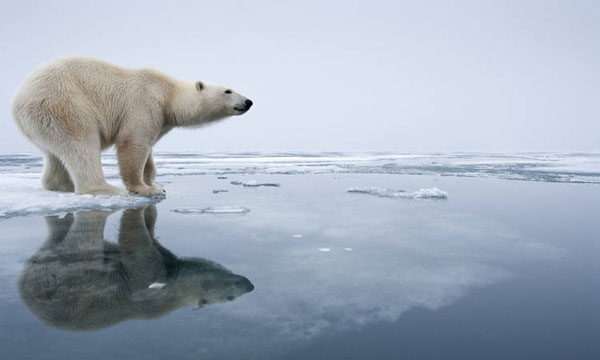Antarctica has plenty of sea ice and abundant food sources, but polar bears have nowhere to go.

Arctic and Antarctic habitats have many similarities, but the creatures that inhabit them are very different. Both polar regions are home to seals and whales, but only the North Pole is home to the largest bears on earth - polar bears.
Polar bears (Ursus maritimus) are usually found around the Arctic Circle in Alaska, Canada, Greenland, Norway, Russia, and Iceland. Polar bear fur is particularly adapted to temperatures below 30 degrees Celsius. The animals spend most of their time on the ice, feeding on blubber seals to provide them with enough energy. Long intake between meals.
Antarctica also has sea ice, cold temperatures, and seals, but no polar bears at all.
Most bears live in the Northern Hemisphere, according to Andrew Derocher, a professor of biology at the University of Alberta (Canada) who has studied polar bears for nearly 40 years. With the exception of the Andean short-faced bear (Tremarctos ornatus) in South America, bears are found only in the Northern Hemisphere.
There's no particular reason for this, except that some species evolved in certain places and others didn't, Derocher said. "Biogeography is full of quirks. Some species arrive in new lands and some don't," he explains.
In the evolutionary history of polar bears, the Arctic and Antarctic have never been connected by ice or land. "People often say polar bears are the largest terrestrial carnivores in the world, but they barely even live on land," Drocher said. In fact, the animal spends most of its life on sea ice, only occasionally coming ashore to breed.
Evolutionarily, polar bears are relatively young animals. They evolved from a common ancestor with the brown bear ( Ursus arctos ) about 5 million to 500,000 years ago.
But even 5 million years ago, today's continents were in the same position, so polar bears didn't have a chance to get from one pole to the other.
The closest landmass to Antarctica is the southern tip of South America, including Chile and Argentina. To reach the South Pole, polar bears need to cross the dangerous Drake Passage. The area is known for strong storms and rough seas as cold water flows from the south into warmer waters to the north.
However, if given the chance to go to Antarctica, polar bears would still thrive, Derocher said. In the Arctic, they eat seals and sometimes birds and eggs. All three of these foods are abundant in Antarctica, with six species of seals and five species of penguins. Furthermore, none of these species have evolved to defend themselves against large, agile land predators.
The Antarctic environment will be a gluttonous feast for polar bears. That's why they shouldn't have been brought here. Polar bears' appetites and local animals' lack of vigilance against large land predators could lead to ecological collapse. So, maybe this great white bear should only live in the north.
animal tags: bears seals penguins whales
We created this article in conjunction with AI technology, then made sure it was fact-checked and edited by a Animals Top editor.